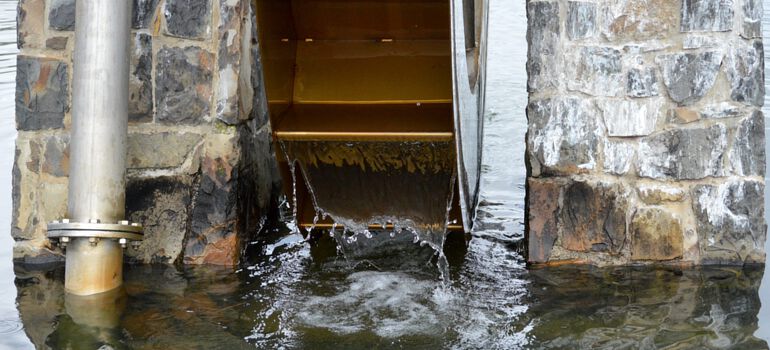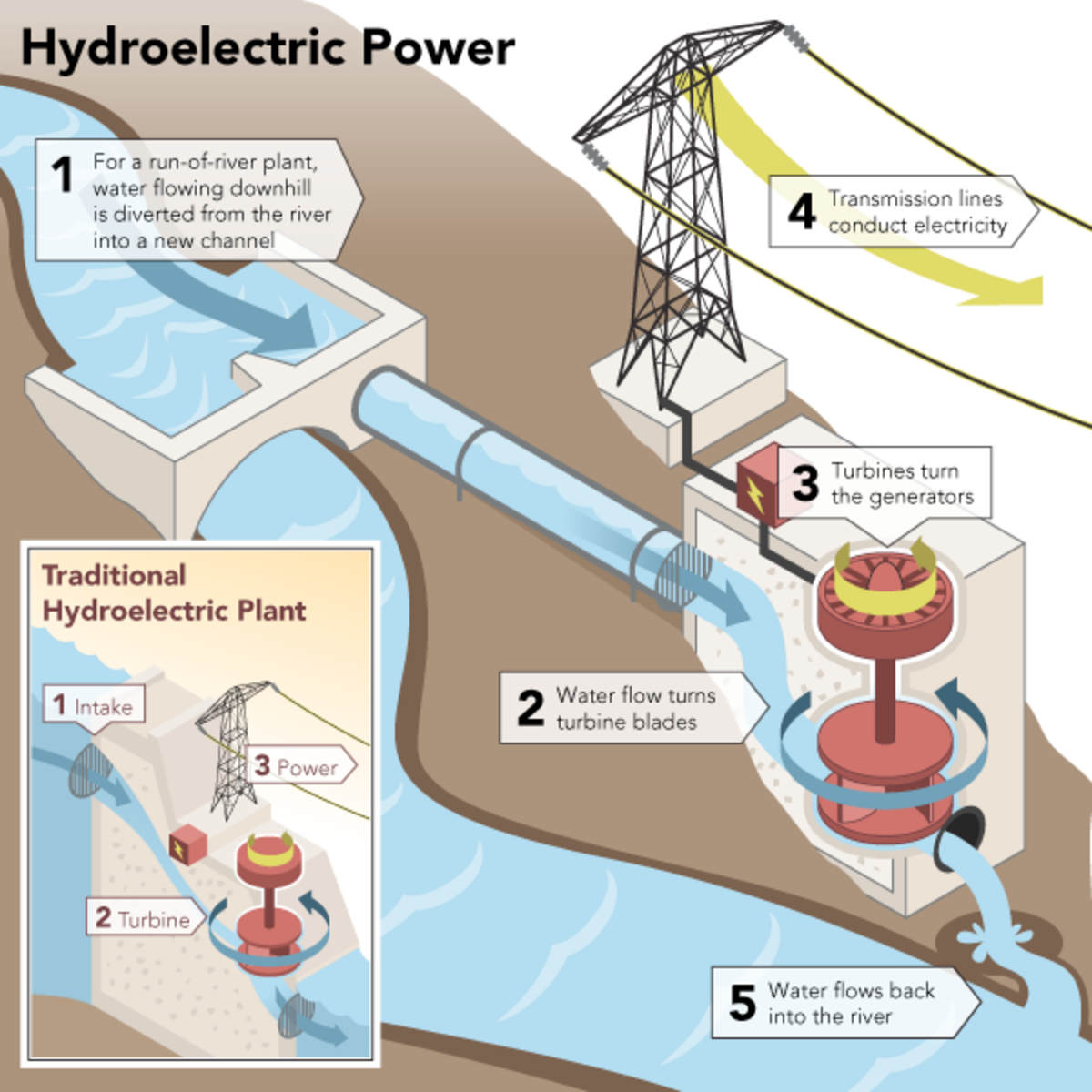

Pumped storage incorporates two reservoirs. Both storage and run-of-river schemes can be diversion schemes, where water is channelled from a river, lake or dammed reservoir to a remote powerhouse containing the turbine and generator. Run-of-river schemes use the natural flow of a river, where a weir can enhance the continuity of the flow. In storage schemes, a dam impounds water in a reservoir that feeds the turbine and generator that are usually located within the dam itself. There are 3 main types of hydroelectric schemes in use in the UK: Storage schemes The amount of hydroelectric power generated depends on the water flow and the vertical distance (known as ‘head’) the water falls through. This causes the turbines to rotate at high speed, driving a generator that converts the mechanical energy into electrical energy. Turbines placed within the flow of water extract its kinetic energy and convert it to mechanical energy.

This can be from rivers or man-made installations, where water flows from a high-level reservoir down through a tunnel and away from a dam. Hydroelectric power is the energy derived from flowing water. Although further large-scale development potential is limited, there is scope for exploiting our remaining small-scale hydro resources in a sustainable way. Finally, there is apparent room for improvement not the least regarding the tariffs, which do not reflect market price and hence may affect the sustainability of the system.The UK currently (2011) generates about 1.5% of its electricity from hydroelectric schemes. The finite supply of energy however means that there are restrictions using electricity for certain productive use – there is a load shedding schedule in place for some of the power intensive machines - due to overload caused by the load and large number of connections. The study concludes that the minigrid has led to productive uses that are found elsewhere in grid-connected rural communities. Moreover, the minigrid faced a number of technical problems partly because of lack of adequate technical resources such as technicians and spare parts but also from the poor-planning and non-saving culture. A tentative conclusion is that subsidized electricity will not promote rural businesses unless other criteria are met. to only service the hospital, as the idea and need for building a minigrid developed much later. Major challenges are related to the initial set up of the mini-hydro power plant, i.e. The analysis shows that certain entrepreneurial activities emerged as an outcome of electricity access thru the minigrid barber shops, welding machines, mobile phone charging, salons, photo copy, and lighting business centres. The study applies an interdisciplinary approach consisting of a mix of qualitative and quantitative methods, which included stakeholder and user interviews and measurements of output power and water flow.

electricity as a direct input to the production of goods or provision of services. The approach was chosen to provide in-depth understanding on benefits and challenges facing a rural minigrid. This paper presents a case study of a minigrid powered by a small hydro plant in the southern highlands of Tanzania.


 0 kommentar(er)
0 kommentar(er)
